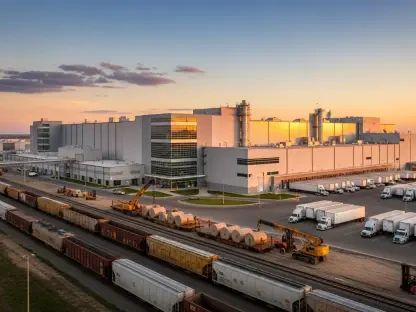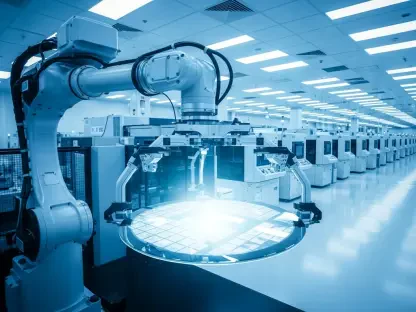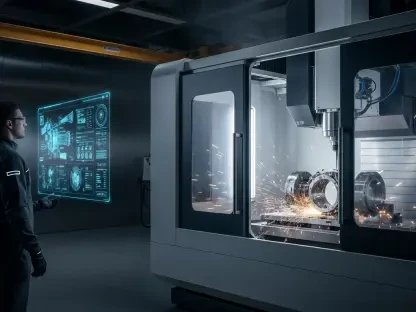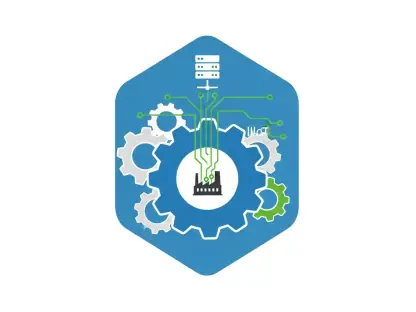Kwame Zaire, a prominent figure in manufacturing technology, has long been at the forefront of introducing innovative ideas in production management, predictive maintenance, quality, and safety. With the rapid evolution of Generative AI (Gen AI) and its transformative potential within the manufacturing sector, he offers invaluable insights into its current and future impacts. In this interview, Kwame discusses how Gen AI is redefining manufacturing, the critical roles it plays, and the challenges of its integration amidst an industry facing labor shortages and outdated systems.
How is Gen AI transforming the manufacturing industry currently, and what distinguishes its impact from previous improvements made by traditional AI?
Gen AI is revolutionizing manufacturing by adding a new layer of creativity and adaptability to production processes. Unlike traditional AI, which focuses on automating repeatable tasks and analyzing data for predictions, Gen AI can generate innovative designs and solutions from existing data. This qualitatively shifts the potential for increased customization and process efficiency, allowing manufacturers to go beyond mere automation to genuinely transformative changes in how products are designed, manufactured, and delivered.
Can you explain the role of Gen AI in handling global supply chain shocks and labor shortages?
Gen AI addresses global supply chain shocks by improving predictive capabilities and operational flexibility. By analyzing a vast array of variables and changes in real-time, Gen AI helps manufacturers adjust their supply chains dynamically and efficiently. Labor shortages are partly mitigated as Gen AI automates more complex tasks, reducing the manual intervention needed and diversifying the roles employees can take on.
What steps are manufacturers taking to modernize operations while dealing with outdated systems and weak governance structures?
Manufacturers are increasingly investing in upgrading their technological infrastructure and aligning their governance models to support innovation. The shift often involves integrated systems that amalgamate new technologies like Gen AI with existing frameworks, supplemented by reshaping policies to handle data governance, security, and ethical AI usage effectively. This approach often necessitates partnerships with technology developers and consultancies to bridge capability gaps.
Based on NTT Data’s study, what are the main ways Gen AI is enhancing efficiency and overall performance in manufacturing?
The study highlights several core functions where Gen AI significantly boosts efficiency and performance, such as in supply chain and inventory management. Gen AI offers more precise demand forecasting, accelerates quality control processes through immediate anomaly detection, and helps automate research and development. The overarching theme is one of efficiency, where manufacturers gain from quicker decision-making and reduced waste through well-informed operations.
Why is the integration of Gen AI with Internet of Things (IoT) data crucial for manufacturers, and what benefits does this combination bring?
The integration with IoT data amplifies Gen AI’s effectiveness by providing a real-time flow of data from various operational points within a manufacturing setup. This enhances AI’s predictive accuracy and responsiveness, ensuring that insights derived from Gen AI are rooted in current operational realities. The symbiosis allows manufacturers to optimize asset performance and anticipate maintenance needs, ultimately minimizing downtime and boosting productivity.
How are digital twins being used alongside Gen AI to improve asset performance and supply chain resilience?
Digital twins provide a detailed virtual replica of physical assets, which, when combined with Gen AI, can simulate different scenarios and predict outcomes with high accuracy. This duo empowers manufacturers to manage and optimize asset performance proactively, foreseeing potential failures before they occur. In terms of supply chain resilience, this combination allows for real-time scenario planning, enhancing decision-making and ensuring continuity amid disruptions.
In what core enterprise functions is Gen AI playing a practical role, and how is it streamlining processes?
Gen AI plays a pivotal role in areas like quality control, where it provides real-time analytics and inspections that surpass human capabilities. In supply chain management, it optimizes inventory levels and logistics, ensuring the right components are available at the correct times. Process automation across departments reduces manual errors and accelerates production timelines, while in R&D, it accelerates prototype development through innovative design suggestions.
Could you elaborate on how Gen AI provides flexibility in industries exposed to unpredictable conditions, such as shifting tariff rules?
In industries where tariff policies can change suddenly, Gen AI equips manufacturers with the means to rapidly assess potential impacts and devise strategies accordingly. It models various scenarios based on changing tariffs, allowing businesses to pivot their production and sourcing strategies with agility, ensuring competitiveness and reducing risk exposure by continuously adapting to market conditions.
What are the major barriers preventing wider Gen AI adoption among manufacturers, and how can they be addressed?
The prevalent barriers include legacy systems that no longer meet the demands of sophisticated AI applications, resulting in hesitance to adopt new technologies without significant upfront investments. To overcome this, manufacturers must prioritize infrastructure modernization and foster a culture of innovation that embraces change. Strategic partnerships and investment in workforce education to upskill employees will be crucial to overcoming these barriers.
How significant is the issue of legacy systems in hindering the adoption of Gen AI in manufacturing?
Legacy systems are a considerable hindrance due to their limited compatibility with new technology, hindering seamless integration and stymieing Gen AI’s full potential. They often lack the sophistication required for high data throughput and real-time processing essential for Gen AI. Addressing this involves phased infrastructure upgrades, adopting modular approaches that allow components of legacy systems to be incrementally enhanced or replaced.
What challenges do manufacturers face regarding data storage capacity for Gen AI and larger AI models?
Manufacturers are grappling with not only the sheer volume of data required by Gen AI but also the speed and capacity at which this data needs to be processed and stored. Effective solutions involve adopting cloud-based storage options that can scale according to demand. Moreover, investments in data compression technologies and edge computing can offset infrastructure constraints by distributing data processing across various network points.
How can manufacturers overcome the workforce skills gap to efficiently use Gen AI tools?
Manufacturers need to invest significantly in training and reskilling their workforce, focusing on digital literacy and advanced AI tool competencies. Creating in-house centers of excellence devoted to AI training, collaborating with educational institutions for specific programs, and offering continuous learning opportunities such as workshops and online courses are effective strategies to bridge this skills gap.
What pressures do British manufacturers face today, and how can Gen AI help them address these challenges?
British manufacturers are under increasing pressure from rising operational costs, intense international competition, and the complexity of supply chains influenced by varying local regulations. Gen AI provides tools to tackle these issues by automating and optimizing processes, reducing costs, and keeping them competitive on a global scale while ensuring compliance through adaptive planning and intelligent forecasting.
Why is building a strategic and responsible approach to Gen AI critical for manufacturing companies?
Building a strategic framework is essential to reaping the full benefits of Gen AI by aligning its implementation with business goals while mitigating risks. A responsible approach also encompasses regulatory compliance, ethical considerations, and long-term viability, promoting sustainable practices that safeguard both the business and its stakeholders from potential risks associated with AI misuse or data privacy breaches.
How have successful manufacturing organizations integrated Gen AI into their operations, and what lessons can others learn from them?
Successful organizations have integrated Gen AI by embedding it into their core processes and fostering a culture that values innovation. They focus on scalable AI deployments alongside continuous workforce development. These companies illustrate the importance of aligning technological advances with business strategy, showing that deliberate, structured planning coupled with tactical execution results in realizing tangible performance improvements.
How can manufacturers ensure long-term and safe use of Gen AI amidst growing technology investment?
Manufacturers can ensure the long-term, safe use of Gen AI by developing robust governance frameworks that encompass risk management, ethical impact assessments, and continual system auditing. This requires steady oversight to foster transparency and adaptability in technology development. Regular training and community engagement will also support conscientious technology investment and application.
Do you have any advice for our readers?
The journey with Gen AI should begin with a clear understanding of your organizational needs and capabilities. It’s crucial to set realistic goals, remain agile, and be open to learning and adaptation as you integrate Gen AI. Partner with stakeholders, prioritize responsible innovation, and remember that successful implementation is as much about cultural change as it is about technological advancement.









